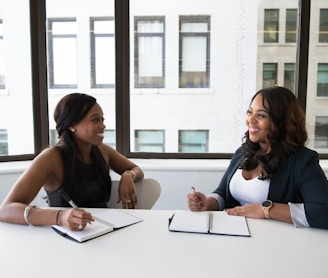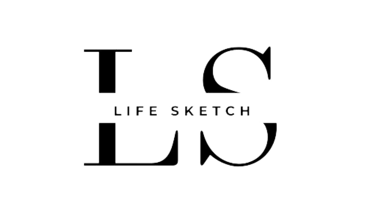20+ Best ways to Respond to - "How Was Your Day?" (with How Was Your Day Answer Examples)
LIFESTYLE


1. Understanding the Intent Behind the Question - How Was Your Day Answer Starts Here
"How was your day?" or "How is your day going?" may sound like simple, routine questions, but they are powerful social tools that serve a much deeper purpose. Understanding the intent behind these questions is crucial for crafting the most appropriate and meaningful response.
At their core, these questions are often an invitation to connect. Depending on the relationship and context, the person asking may be making small talk, showing concern, breaking the ice, or genuinely seeking an emotional update. When someone asks, “How was your day?”, they may not be expecting a minute-by-minute breakdown, but they are often offering you space to share.
There are emotional layers to consider. A coworker might ask this at the end of a meeting simply out of politeness, while a close friend or romantic partner may use it to gauge your emotional state or open up a deeper dialogue. Even the way the question is asked—tone of voice, body language, or emoji use in text—can give clues to their intent.
Reading between the lines becomes important. Is it a quick check-in or an open door for venting? Did the person reach out randomly just to ask that? If so, it’s likely a sign they care about your well-being. If it's part of a conversation starter during a first date or a casual acquaintance meetup, the goal may be more about mutual discovery.
Ultimately, understanding the why behind the question allows you to respond with the right level of depth, empathy, and tone. You don't always need to overthink your answer, but being mindful can make conversations more meaningful and build stronger emotional connections.
2. Choosing the Right Tone for Your How Was Your Day Answer
Tone is everything. A sincere message can come off as sarcastic, or a joke can sound cold, if the tone is mismatched. When responding to “How was your day?” or “How’s your day going?”, choosing the right tone—whether it's professional, casual, flirty, or supportive—sets the direction for the rest of the conversation.
Formal Tone — How Was Your Day Answer Guide
In professional or new relationships, it's best to maintain a neutral, positive tone. Keep it brief but friendly. You want to sound approachable without crossing boundaries. For example:
“It’s going well, thank you! Got a lot accomplished today.”
Casual Tone — How Was Your Day Answer Guide
With friends or people you’re comfortable with, a laid-back and relaxed tone works well. You can be more honest or humorous, sharing personal highs or lows.
“Honestly? A rollercoaster. But at least there was ice cream.”
Flirty Tone — How Was Your Day Answer Guide
When texting someone you're interested in romantically, tone can turn a simple question into a moment of emotional connection or flirtation.
“It was okay, but hearing from you definitely made it better. 😊”
Supportive or Vulnerable Tone — How Was Your Day Answer Guide
In emotionally safe spaces—like with close friends, partners, or trusted colleagues—using a vulnerable tone can deepen the relationship. Don’t shy away from being real.
“Honestly, today was rough. Just trying to stay grounded.”
Funny or Sarcastic Tone — How Was Your Day Answer Guide
Humor is a great tool to keep the mood light, especially with people who understand your wit.
“Still alive, didn’t spill coffee on myself—so I’d say a win!”
Tone should be adjusted depending on the platform (text, call, in-person) and the timing of the conversation. A funny tone might work in the evening over drinks but not during a serious work Zoom call. Always feel the room and know your audience.
In essence, your tone is the emotional wrapper of your words. When it aligns well with the context and the relationship, even the most routine question can lead to meaningful interaction.
3. Responding Based on Relationship and Setting
Your relationship with the person asking plays a major role in shaping your response. The setting also impacts how much or how little you share. Let’s explore different contexts and the ideal responses for each.
a. Professional or Workplace Settings — How Was Your Day Answer Guide
In a work context, professionalism matters. Your response should reflect a positive and composed image. You can acknowledge workload or challenges without sounding overly negative.
Examples:
“It’s been productive, busy but fulfilling!” “Lots on the plate today, but making good progress.”
Oversharing or expressing strong emotions like frustration or boredom may be seen as unprofessional or out of place unless you have a close relationship with the colleague.
b. Friends & Family — How Was Your Day Answer Guide
These are your safe spaces, where you can afford to be more open, quirky, or even vulnerable. You might share highlights, personal challenges, or funny moments.
Examples:
“You wouldn’t believe what happened today—my cat knocked over my Zoom setup!” “Honestly? I’m exhausted, but I’m glad to finally be home.”
Here, authenticity is appreciated. It builds deeper emotional bonds and creates space for reciprocal sharing.
c. Romantic Interest / Dating — How Was Your Day Answer Guide
When texting someone you’re dating or hoping to date, your response should keep the connection engaging and emotionally inviting. Whether you're being flirty or deep, show your personality.
Examples:
“It was okay, but I was thinking of our last conversation—it made me smile.” “Could’ve been better… wanna help me make it better?”
d. Acquaintances or Casual Contacts — How Was Your Day Answer Guide
Here, keep things light and general. You don’t need to delve into emotional territory.
Examples:
“It’s going well, thanks! Just a regular day.” “Nothing too exciting, but no complaints.”
In all these settings, matching the response style to the relationship and setting ensures clarity, avoids awkwardness, and maintains conversational flow.
4. Creative and Unique Ways to Respond
Standing out in conversation—especially via text—can help build rapport and make your responses more memorable. Instead of just saying “Good” or “Busy,” try expressing your day with a little flair.
Use Imagery or Metaphors
“Like a Netflix plot twist—started slow, got weird, ended with snacks.” “Imagine a Monday mixed with a Friday… chaotic yet hopeful.”
Relate to Pop Culture or Humor
“If today were an episode of Friends, I’d be Joey trying to work but ending up with pizza.” “Kinda felt like the WiFi—strong one moment, disconnected the next.”
Tell a Mini-Story
Instead of summarizing, narrate:
“My day started with a spilled coffee, a surprise client call, and ended with my dog stealing my sock. Eventful, to say the least.”
Add a Question Back
This keeps the conversation going and shows mutual interest:
“My day was a 7/10—what about yours?” “Better now that you asked! How’s your day going?”
Emojis or GIFs
Sometimes visuals express things better than words:
“💼☕➡️😩➡️🍕➡️😊”
Being creative keeps things engaging. You don’t have to be poetic—just adding a twist to your response shows personality and effort.
5. Expressing Honesty Without Oversharing
There’s a fine line between being honest and oversharing, especially when you’re unsure of how much the other person wants to know. Being real is important, but so is emotional awareness.
Why Honesty Matters
Being authentic builds trust. If your day was tough, you don’t have to pretend otherwise. However, you can express that honestly without burdening the listener.
How to Share Honestly But Tactfully
“It’s been a challenging day, but I’m managing.” “Not the best, but I’m trying to stay positive.” “A bit stressful—glad it’s winding down now.”
These responses are honest but not heavy. They open the door for empathy without making the other person uncomfortable.
Use the 'Sandwich' Method
Combine the good, bad, and hopeful:
“Started out rough with a missed deadline, but I ended the day with a good workout, so not too bad overall.”
When to Share More
If someone asks follow-up questions or you’re in a safe relationship, it’s okay to be more open:
“Honestly, I’ve been struggling today—work’s been overwhelming.”
Being honest doesn’t mean revealing every detail. Gauge the situation and choose what to share based on the emotional capacity of the conversation.
6. Tips to Keep the Conversation Going
A one-word reply like “Good” often leads to a dead-end. To keep the conversation flowing, aim to reply in a way that invites curiosity or signals interest.
a. Ask a Question Back
This is the simplest yet most effective way:
“Pretty good—what about you?” “Busy but productive. How’s your day treating you?”
b. Share Something Relatable
“Had back-to-back meetings all day. I could use a nap!” “Just got done cleaning my inbox. Feels like a full workout.”
c. Add Humor or Emotion
“Feel like I ran a marathon—and it’s only Tuesday.” “My coffee wore off way too early today.”
d. Show Curiosity
“It’s been okay! Anything exciting happen to you today?” “Today was fine. Got any weekend plans?”
By extending the conversation, you signal interest and build rapport, especially important in new or growing relationships.
7. Common Mistakes to Avoid
Finally, here are some pitfalls to avoid when answering the question “How was your day?”
a. Being Too Vague or Robotic
“Fine.” “Okay.” “Same as usual.”
These responses kill conversation. Add a little detail or emotion to make it engaging.
b. Oversharing Unfiltered
Dumping too much negative information can overwhelm the other person:
“I’m so depressed and everything sucks.”
Instead, soften the tone:
“It’s been tough today, honestly. I appreciate you asking.”
c. Being Inauthentic
Don’t fake being overly cheerful. People can usually tell when you're not being real.
d. Not Asking Back
If someone takes the time to ask how you are, return the gesture. One-sided responses signal disinterest.
By avoiding these mistakes, your conversations become more thoughtful, reciprocal, and meaningful.
Responding to "How was your day?" is more than just replying to a question—it’s an opportunity to connect. Whether it’s through humor, honesty, or vulnerability, your words can leave an impression. Mastering this simple interaction helps you build stronger relationships, both personally and professionally. So next time someone asks, take a moment, reflect, and respond with intention.










